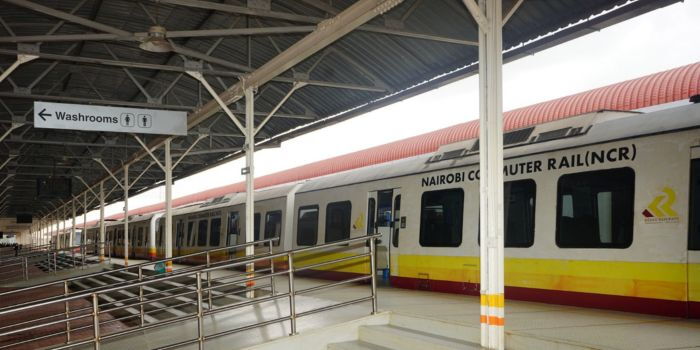The Kenya Railway Corporation is seeking to evaluate a plan to upgrade the Nairobi Commuter Rail Network with funding from the World Bank.
According to a notice via the government publication MyGov on Tuesday, February 18, Kenya Railways indicated that it plans to bid for funding as part of the Kenya Urban Mobility Improvement Project (KUMIP).
In a letter to the World Bank seen by Kenyans.co.ke, the Principal Secretary for the State Department of Transport stated that Kenya is seeking a facility of USD 670 million, about Ksh86.43 billion at the current exchange rates.
The letter further indicates that the government will channel the funds towards payments for goods, works, non-consulting services, and consulting services to be procured under this project.
Nairobi Central Railways Station nested near Easy Coach bus station, Nairobi, November 19, 2024.
Photo
KR
According to the letter from the PS to the World Bank, Kenya Railways will carry out track rehabilitation, upgrading, and capacity enhancement of the line between Nairobi Central Station (NCS) and Thika. The government plans to create Transit Oriented Development (TOD) facilities and access roads to commuter stations.
TODs are a design strategy that focuses on creating compact, mixed-use urban areas where people can easily access public transportation like trains, buses, or light rail by walking or cycling.
“Provision of improved access to railway stations, prioritising NCS to Thika, including NMT facilities and feeder bus services, based on the integrated public network to be developed under the integrated urban mobility plan,” the PS told the global lender.
The Ministry of Transport further indicated that the project will involve the acquisition of multiple-engine trainsets and improvements to communication and signalling, as well as automatic fare collection systems, traffic management improvements, and the design and implementation of green mobility solutions.
The Nairobi Commuter Rail service was established in May 1992 to provide a reliable alternative to road transport, especially during frequent matatu strikes. Despite its potential, the service faced challenges, including limited routes and ageing infrastructure, leading to low demand over the years.
In its notice on Tuesday, Kenya Railways announced that it is set to undertake an assessment of the viability of the project. The assessment will evaluate the technical, social, environmental, financial, and economic viability of upgrading and/or rehabilitating the Nairobi Commuter Rail (NCR).
According to the letter from the PS, the government will also use the funds to develop a roadmap for digitising services with the Kenya Railways Corporation.
In 2020, the government undertook the rehabilitation of existing railway lines, upgrading halts to mini-stations, and modernising the Nairobi Central Railway Station.
This was followed by an expansion in December 2023, which marked the commencement of a new 12.5 km metre-gauge line from Riruta to Ngong, passing through Karen and Embulbul.
Constructed by the China Road and Bridge Corporation (CRBC), this line aims to serve an additional 10,000 passengers daily, further easing road congestion. Plans include extensions to Kiserian and Ongata Rongai.
By October 2024, seven new stations were unveiled along the Nairobi-Ruiru route, including Kenyatta University, Kahawa West, Githurai, Mwiki, Dandora, and Mutindwa. In the same financial year, the World Bank pledged Ksh65 billion towards constructing a new 58 km rail network to increase daily commuter numbers from 20,000 to 100,000 by the end of the 2024/2025 financial year.
Passengers alighting a train at the Nairobi Central Railway Station, Nairobi, December 9, 2024.
Photo
KR


